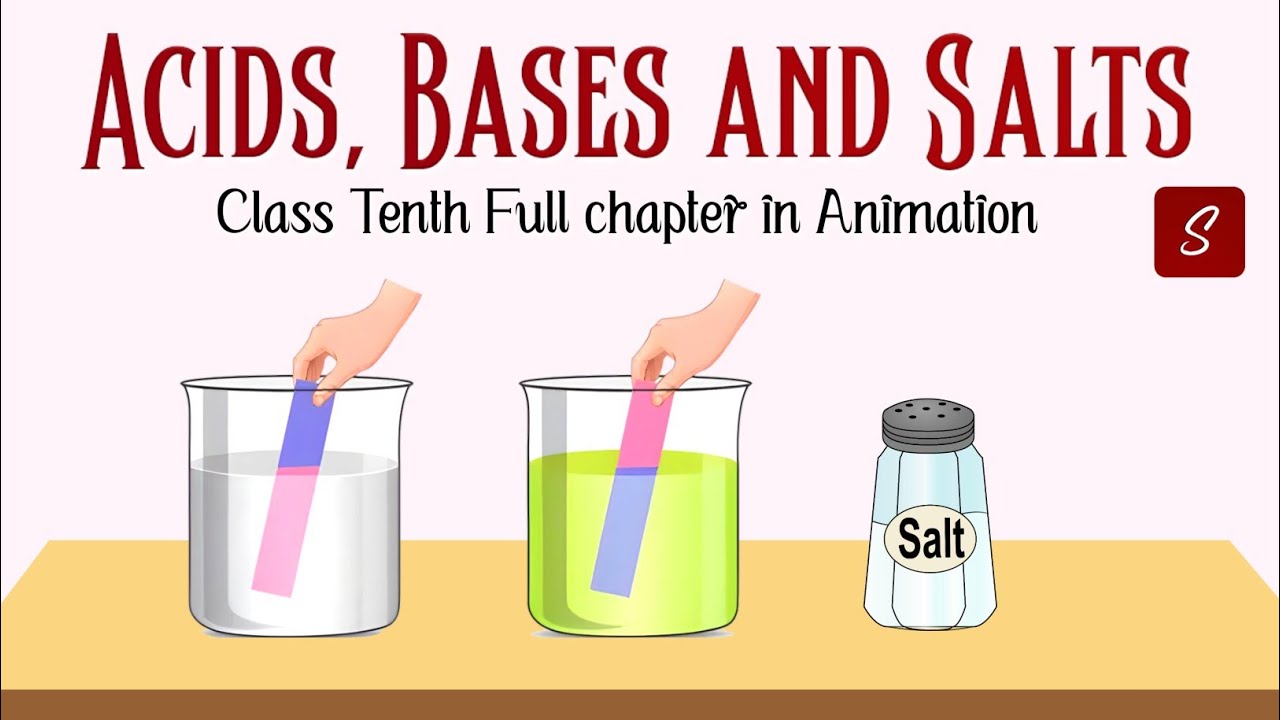Reazioni che danno luogo alla formazione di sali
Summary
TLDRThis experiment explores different types of chemical reactions leading to the formation of salts. It demonstrates neutralization, oxidation-reduction, and double displacement reactions. In a neutralization reaction, sodium hydroxide and hydrochloric acid combine to form sodium chloride and water. In an oxidation-reduction reaction, zinc reacts with hydrochloric acid, producing zinc chloride and hydrogen gas. Lastly, a double displacement reaction occurs when ferrous sulfate reacts with sodium hydroxide, forming a green precipitate of iron hydroxide and leaving sodium sulfate in solution. The video highlights the processes of salt formation through these diverse reactions.
Takeaways
- 😀 Aqueous solutions of sodium hydroxide, hydrochloric acid, zinc powder, ferrous sulfate, and sodium hydroxide are required for the experiment.
- 😀 Safety equipment, like latex gloves, is necessary when conducting the reactions.
- 😀 A salt is a neutral substance formed from a metal and a non-metal, typically through neutralization, redox, or double displacement reactions.
- 😀 Neutralization reactions occur between an acid and a base, resulting in the formation of a neutral salt and water.
- 😀 For example, sodium chloride (common salt) is formed through a neutralization reaction between hydrochloric acid and sodium hydroxide.
- 😀 Sodium hydroxide dissociates in water into hydroxide (OH-) and sodium (Na+) ions, making it a strong electrolyte.
- 😀 Hydrochloric acid dissociates into hydrogen (H+) and chloride (Cl-) ions in water.
- 😀 When sodium hydroxide and hydrochloric acid are mixed, they react to form water and sodium chloride, though the sodium chloride remains dissociated and invisible.
- 😀 In redox reactions, one substance is oxidized (loses electrons) while the other is reduced (gains electrons). An example is the reaction between zinc and hydrochloric acid, producing zinc chloride and hydrogen gas.
- 😀 Zinc reacts with hydrochloric acid, leading to the formation of zinc chloride (a salt) and hydrogen gas, both of which are not visible due to their solubility or gaseous nature.
- 😀 In double displacement reactions, compounds exchange ions to form new compounds, possibly producing gas, water, or a precipitate, as seen when iron(II) sulfate reacts with sodium hydroxide to form a green precipitate of iron(II) hydroxide.
Q & A
What is the main purpose of this experiment?
-The main purpose of the experiment is to observe the reactions that lead to the formation of a salt.
What type of solutions are needed for this experiment?
-The experiment requires aqueous solutions of sodium hydroxide, hydrochloric acid, ferrous sulfate, and a powder of zinc.
What is the chemical basis for the neutralization reaction described?
-In the neutralization reaction, an acid and a base react to neutralize each other, forming a neutral salt and water. For example, sodium hydroxide and hydrochloric acid form sodium chloride and water.
What happens when sodium hydroxide dissociates in water?
-When sodium hydroxide dissociates in water, it splits into sodium ions (Na+) and hydroxide ions (OH-).
What happens when hydrochloric acid dissociates in water?
-When hydrochloric acid dissociates in water, it splits into hydrogen ions (H+) and chloride ions (Cl-).
What product is formed when sodium hydroxide and hydrochloric acid react?
-When sodium hydroxide and hydrochloric acid react, they form sodium chloride (a salt) and water. However, since sodium chloride is highly soluble in water, it remains dissociated.
What is the role of zinc in the redox reaction?
-In the redox reaction, zinc reacts with hydrochloric acid, where zinc undergoes oxidation (losing electrons), while hydrogen ions (H+) from the acid are reduced (gaining electrons), resulting in the formation of hydrogen gas and zinc chloride.
What does the formation of bubbles during the zinc and acid reaction indicate?
-The formation of bubbles indicates the production of hydrogen gas as a result of the reaction between zinc and hydrochloric acid.
What occurs during a double displacement reaction as seen with ferrous sulfate?
-In the double displacement reaction, ferrous sulfate reacts with sodium hydroxide, forming an insoluble green precipitate of iron(II) hydroxide, while sodium sulfate remains dissolved in solution.
How does the presence of heat affect the formation of the zinc chloride salt?
-The presence of heat helps to saturate the solution, facilitating the precipitation of zinc chloride from the solution, making it more visible.
Outlines

This section is available to paid users only. Please upgrade to access this part.
Upgrade NowMindmap

This section is available to paid users only. Please upgrade to access this part.
Upgrade NowKeywords

This section is available to paid users only. Please upgrade to access this part.
Upgrade NowHighlights

This section is available to paid users only. Please upgrade to access this part.
Upgrade NowTranscripts

This section is available to paid users only. Please upgrade to access this part.
Upgrade NowBrowse More Related Video

👨🔬 Reações Químicas - Química - ENEM

Química Simples #07 - Resumos - Funções Inorgânicas

HUKUM DASAR KIMIA

Hidrolisis Garam (1) | Sifat Garam | Reaksi Hidrolisis

Konsep Mudah belajar Hidrolisis Garam - Asam-Basa- Kimia SMA kelas 11 semester 2

Acids, Bases and Salts Class 10 Full Chapter (Animation) | Class 10 Science Chapter 2 | CBSE | NCERT
5.0 / 5 (0 votes)